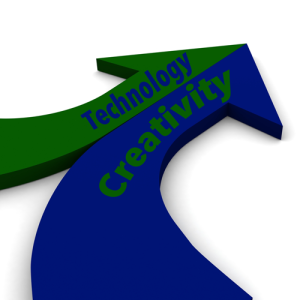Creativity Unbound: How Current Digital Publishing Spotlights Brands
Think about the last truly bold and memorable campaign you saw. Did it change the way you think about the brand? Do you still remember the product or service being sold? Don’t be surprised if it takes you a minute to answer this question. So many marketing messages pass before our eyes that they often […]
Think about the last truly bold and memorable campaign you saw. Did it change the way you think about the brand? Do you still remember the product or service being sold?

In an age dominated by digital engagement, today’s brands pump out an endless stream of content to reach customers and leads scattered across devices and platforms. The result is a blizzard of marketing messages in which consumers frequently feel overwhelmed, cynical or both.
Yet, some campaigns do emerge from the pack and linger in our thoughts — and it’s because they’re distinctive in some way.
The Drive For Distinction
Brands understand the importance of rising above the din. They want to stand out and seize the spotlight — and collectively, they spend billions on design in an attempt to realize this dream.

The businesses want to generate truly creative marketing work; but all too often, they find themselves looking exactly like their competitors.
This dynamic is compounded by the homogenization of skill sets in marketing. Instead of creating a visually arresting brand presence, many teams use the exact same skills and tools to produce digital content that ultimately sounds and looks like an echo chamber.
Businesses want nothing more than to burn themselves indelibly into the customer’s mind, yet they look so identical to other brands that consumers barely notice them. And, because the rigid templates in many first-generation tools disrupt the brand’s look and feel, the messaging and design become disjointed, rather than flowing seamlessly into the rest of their assets. The brand impact goes from a roar to a whisper.
This is a massive disadvantage in a world where customer attention is fragmented between social media, TV, smartphones and other channels. According to a 2013 study by the Association for Data-Driven Marketing and Advertising, creative brand campaigns coupled with activation or response components are far more effective in producing longer-term business profits and sales than simple response-driven campaigns.
In other words, brands that look and sound like everyone else won’t get results. It’s also true that today’s consumers don’t want to be marketed to through traditional one-way efforts; they’re looking for interactive and immersive digital material where they’re as focused on the experience as they are on the product. Only a truly original brand will earn lasting engagement.
Making an intense brand impact through creative distinction is critical.
Technical Ingenuity Meets Brand Creativity

This is a quantum leap over the limitations of first-generation publishing platforms. With these new tools, marketers can create interactive, customized messaging that extends through all channels and platforms.
The content assets can be branded and designed to reflect a particular look and feel, and saved for repeated use. As a result, all of the digital content flows into one seamless and persistent digital presence. Customers encounter the same brand experience regardless of where they are — on their smartphones, at a local stadium, watching television or logging into their social media accounts.
Because these newer tools capture interest and attribute data, they also provide a wealth of customer insight that assists in designing meaningful and targeted campaigns. For instance, a restaurant might determine from campaign data that some customers are more interested in finding a place for business lunches while others are looking for a dinner-and-drinks kind of venue.
The restaurant could then devise different campaigns with highly creative assets that speak to both audiences, driving higher conversion rates. There’s no guesswork in how the creative performs; the data relentlessly steers marketers in the most profitable and popular direction. All campaigns speak to the right audience at the right moment — and are powerfully unique enough to grab attention and build momentum.
Does Your Brand Rise Above The Digital Din?
Maybe by now, you’ve thought of an answer to my question about the last memorable campaign you saw. Possibly you remember the campaign but not the brand, or maybe you’ve forgotten the product. If you remember all three, then those marketers did a great job of advancing both their brand profile and business objectives.
Either way, you’ve probably realized how rare it really is to see an unforgettable campaign these days — and realize the role of creative control in promoting a brand identity that rises above the digital din.
Opinions expressed in this article are those of the guest author and not necessarily MarTech. Staff authors are listed here.
Related stories